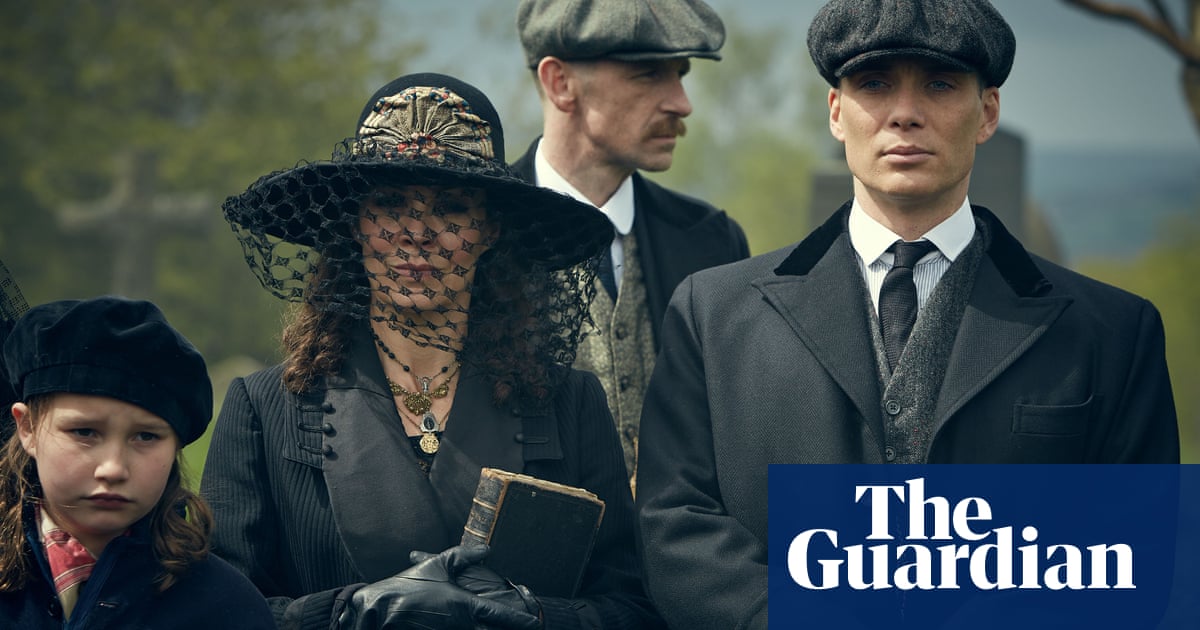Television period drama now has its own history of more than 60 years of series and serials, with many thousands of costumes recreated to evoke eras from ancient Rome to the day before yesterday. But those designed by Stephanie Collie for the first six episodes of Peaky Blinders, shown on BBC Two in 2013, had all the shock of the new, despite that initial series being set in 1919. Period drama usually privileges the ensembles of fashionable women, but the most exciting of the Blinders costumes were for working-class dandy gangsters from the early 20th century.
Previously, in adaptations of Dickens, Gaskell and Bennett, urban lower orders knew their wardrobe as well as their social place – clad in corduroy over uncollared shirts, perhaps a muffler to fill in the neck against bitter cold and a generic “cloth cap” – none of it incorrect, but without age or degree, and seldom any sexuality. Collie, who has died aged 60, perceived something far sharper during her research into Birmingham’s vintage criminals. She studied old police mugshots, plus the solid woollen cloths and narrow cuts seen at the racecourses, where Savile Row-tailored nobs dealt with horse-breeding and betting mobs who had developed their own sporting style over more than a century around the stables, including nattier caps – six-panelled, generous towards the rim and with a canvas-reinforced brim (easily razor-blade enhanced for plot purposes).
She replicated that style’s attention to laced boots and leather gloves, and exploited to the max the variety of neckwear arrangements – crucial in television where so much of a show’s footage will always be head-and-shoulder shots – that had been possible when shirt and collar were separate items, attached to each other only by metal studs front and back. The neck hierarchy ascended from a sexy unbuttoned placket on a collarless undershirt, up to an encircling wall of high, stiff collar, further guarded by tie and pin between collar tabs.
Watch the early episodes and see how Cillian Murphy wears just a fancy front stud in his shirt’s neckband, no collar, as jewellery. (There were touches from Josef Koudelka’s photographs of Roma men about his appearance, too, to connect with the character’s Traveller and Gypsy ancestry.) Or look at how Paul Anderson’s respectable collar plus bow-tie softens his appearance so that his violent outbreaks come as a surprise. Collie incorporated the brutality of Sam Neill’s Ulster policeman into his outfits – in a thick, heavyweight overcoat, he looks and moves like a tank.
Collie’s women’s clothes for the episodes were sound, but it was her work for the men (also the “white walls” plus cowlick hair cuts/shaving, done by a roster of stylists) that reverberated in 2013, so besides winning her the Royal Television Society award for best costume design, her elegant gangsters inspired the fashion press.
Her first major menswear movie, Lock, Stock and Two Smoking Barrels (1998), had also been an anthology of precise characterisation by clothing choice – from a big softie crook in a supersized sheepskin coat, to hard boys in slender dark suits over the thinnest jersey sportswear tops, which were 1990s laddishness pointing towards Hedi Slimane’s oncoming 21st-century male silhouette. Collie’s clothes could be jokes themselves – she used some of the last proper brown-cotton warehousemen’s coats as a robbery ploy that then turned into getaway gear.
Her mixture of acute observation with visual imagination may have come from her father, Peter Collie, an artist. He, his wife Elizabeth (nee Stewart), and their four daughters moved from Warrington, Cheshire, where the girls were born, to Cheltenham. Collie went to Pate’s grammar school there, and on to the London College of Fashion. Her first professional job was in clothing construction for the BBC, where she met Susan Coates, a costume-maker and tailor who had worked for Kenneth Branagh’s Renaissance Theatre Company, and later on his films: Coates and Collie were in the wardrobe department for Branagh’s Peter’s Friends (1992) and Much Ado About Nothing (1993).
A long list of costume designer credits for film, television and streaming productions followed, about two a year. Collie did full period, depressed Yorkshire in the 30s for BBC One’s South Riding (2011), with tailor-made suits and non-frivolous hats the markers of a first generation of employed professional women; there was also a single flat-capped and mufflered non-professional man.
She also had fun gearing up Steve Coogan as the porn magnate Paul Raymond in the biopic The Look of Love (2013), especially the sequences that showcased him during the 70s in a reprehensible beagle collar and funky ties. But many of her assignments were set in modern times, done by selective shopping and fitting, as with her drug dealers in calibrated casuals in Layer Cake (2004), including a pre-James Bond Daniel Craig, whose few changes – quality T-shirts and an arrow-narrow raincoat – only rose to an actual suit for him to be shot in.
Collie married Hubert Taczanowski, a cinematographer, in 2007; they worked on a number of productions together. He died in June. Collie’s three sisters, Fiona, Alison and Nicola, and her stepdaughter, Julia, survive her.











